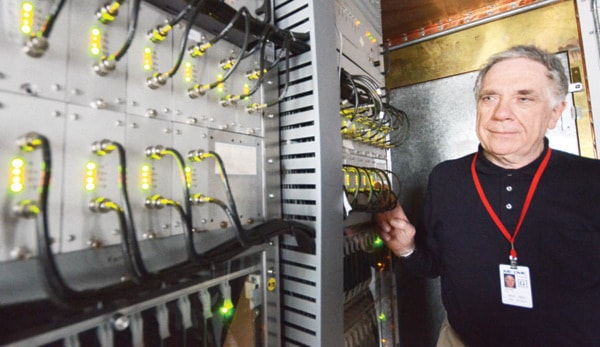In every observatory and research centre around the world you will find copies of the Astronomical Ephemeris and American Ephemeris and Nautical Almanac.
This book, produced jointly by the U.K. and U.S., contains extensive tables of data, such as where the Sun, Moon, planets and moons of those planets, and lots of other celestial objects will be in the coming year. Today it is available in electronic form, as well as a physical book. The Observer's Handbook, produced annually by the Royal Astronomical Society of Canada is an example aimed mainly at backyard astronomers.
The equations describing the motions of astronomical objects have been around for a long time, and don't change much. However, producing the tables in the Ephemeris involves putting times, dates and other information into those equations and then solving them. That entails an enormous amount of meticulous and accurate calculation. Today we have electronic computers to help us. Back in the 19th and for half of the 20th Century, we had no such help, but we still needed the numbers. In those days we used computers too, but the computers were people. In fact, the original meaning of "computer," was "a person who computes," rather than a "machine that computes."
Imagine a room filled with people, all with pencils and paper and mathematical tables, calculating and double-checking. Multiple people would be doing the same calculation, just to ensure that the results were correct. There were people moving among all those desks, collecting results and passing out new work. These results, after being carefully checked a few more times, were typeset and printed in that vitally important book.
Many of the desks were occupied by women. In fact, back then doing astronomical computing or being observing assistants were pretty well the only routes women could take to break into male-dominated science. This is how Henrietta Leavitt got into astronomy. She started off as a "computer," and then worked her way into astronomical research. Leavitt went on to discover how to use Cepheids, a type of variable star, to determine the distance of far-off galaxies. The cosmic "ruler" she gave us is still the best we have for measuring the universe. Most theories for the origins and nature of the universe have the work of Henrietta Leavitt in there somewhere.
In the 1950's digital computers started to become available for other than military work. It became possible for the U.K.'s Royal Greenwich Observatory and the U.S. Naval Observatory, responsible for producing the information in "the book," to transfer the precision drudgery of the position calculations to non-human computers. Although such computers soon started turning up in observatories, even in the 1970's they could not do much more than control telescopes and log data. Modern observatory computers can do the positional calculations as well. Today, smart phones contain more powerful computers than those room-filling behemoths of the 1950's, and we can purchase or even download free software for doing our own astronomical calculations.
However, this raises a problem. There are now many programs for calculating astronomical positions, using different methods and with different accuracies. This means that for precision astronomy we still need numbers of high accuracy and consistent quality, produced using standardized methods developed over decades — the "gold standard" for astronomical calculations. Fortunately, we now manage all our tedious astronomical number crunching using machines. Also fortunately, today there are standard ways to get into science, which are open to everyone.
Venus shines brilliantly, low in the Southwest after sunset. Mars, redder and much fainter, lies to the left of Venus. Jupiter rises in the early hours. The Moon will be New on the 27th.
Ken Tapping is an astronomer with the National Research Council's Dominion Radio Astrophysical Observatory, Penticton.
